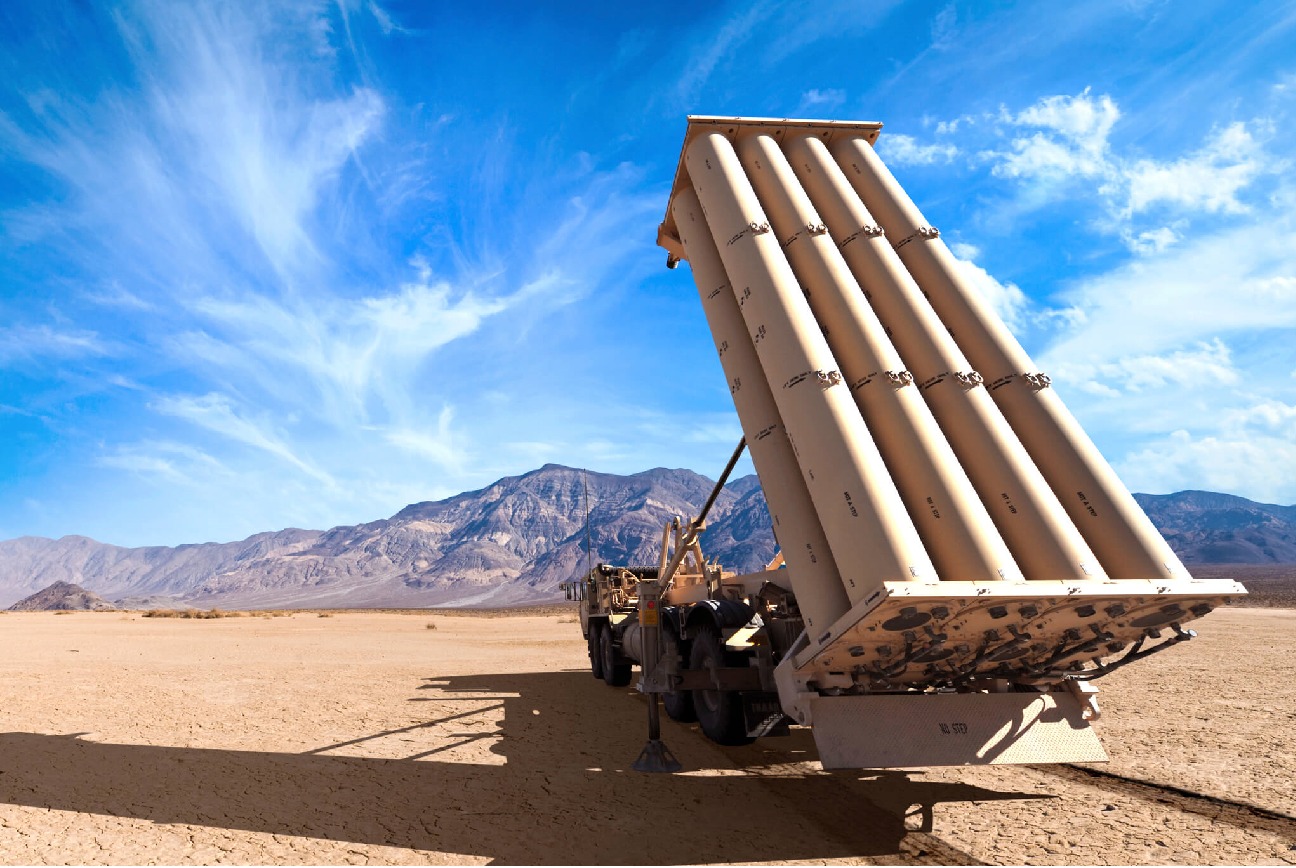The US Army has announced that Task Force Talon’s E-3 ADA THAAD Battery recently carried out a Table VIII evaluation for the Terminal High Altitude Area Defense (THAAD) system stationed in Guam from March 11 to 15, 2024.
Chinese JF-17 “Shot Down” By 2nd-Hand F-16 Fighter Jet; US Establishes ‘Air Supremacy’ In Argentina
Equipped with a cutting-edge missile defense system, the E-3 THAAD Battery stands as a bulwark against potential ballistic missile threats to Guam and its surrounding areas.
Given the evolving security landscape in the region, the conclusion of the Table VIII evaluation underscores the unit’s readiness to efficiently deter and address emerging threats, notably those originating from China.
The service said that Senior Air Defense leaders from the 94th Army Air and Missile Defense Command, 38th Air Defense Artillery Brigade, and 35th Air Defense Artillery Brigade played integral roles as evaluators in the Table VIII assessment.
“Table VIII is the first assessment in the series of gunnery tables that brings in external evaluators to assess the Battery’s proficiency on their gunnery task as a collective,” stated Chief Warrant Officer 4, Jennifer Burns, Lead Evaluator.
Throughout the evaluation, soldiers underwent rigorous training scenarios meticulously designed to gauge their ability to deploy, operate, and maintain the THAAD system under simulated combat conditions.
From rapid deployment drills to simulated missile engagements, the evaluation included a spectrum of tasks aimed at assessing the unit’s combat readiness and proficiency.
Lt. Col. Jonathan Stafford, the TF Talon commander, lauded the performance of the THAAD battery, stating, “The evaluators certified that all the crews from the THAAD battery were proficient on all aspects of the Defense of Guam mission. Great job, E-3!”.
The successful completion of the Table VIII evaluation reaffirms TF Talon’s efforts to excellence and its indispensable role in safeguarding peace and security in the Pacific region.
With China’s aggressive behavior in the South China Sea and its expanding military capabilities, the readiness and proficiency of Task Force Talon’s THAAD Battery serve as a crucial deterrent, sending a clear message that any hostile actions against the US and its allies will be met with a robust defense.
China’s Threat
Amid escalating tensions in the Indo-Pacific region, the successful evaluation of Guam’s THAAD battery emerges as a critical milestone in bolstering the island’s defense capabilities against potential threats, notably from China.
Guam, a vital strategic outpost in the Pacific, boasts a robust defense infrastructure comprising the Army’s THAAD ballistic missile defense system and the Navy’s Aegis system positioned offshore. These defense mechanisms serve as crucial deterrents against hostile actions in the region.
The US Department of Defense intends to deploy a comprehensive missile defense system encircling Guam, aimed at safeguarding this critical military hub in the Western Pacific from potential attacks.

To fortify Guam’s defenses further, the Missile Defense Agency (MDA) has allocated a substantial budget of $801 million for fiscal 2024. This funding is primarily directed toward enhancing the island’s integrated air and missile defense architecture through various research, development, testing, and evaluation initiatives.
Guam’s significance extends beyond its defense systems. Its well-equipped ports serve as essential logistical hubs for supporting naval operations, including nuclear submarines and aircraft carriers.
The threat posed by ballistic missiles from North Korea and China looms large over Guam, with these missiles often referred to as “Guam Killers.”
The recent advancements in China’s hypersonic technologies, including hypersonic glide vehicles and cruise missiles, have only exacerbated these concerns. Consequently, the military has been proactive in adapting its strategies to address these evolving threats.
One such adaptation occurred in 2020 when the Department of Defense replaced the Continuous Bomber Presence with Agile Combat Employment, reflecting a shift in approach to enhance operational flexibility.
Additionally, plans are underway to develop “divert” airfields in the region to mitigate the risk of potential disruptions to Andersen Air Force Base and Guam’s international airport runways.
The military’s vigilance underscores the gravity of the threat posed by China’s assertive behavior in the Pacific. Reports of Chinese bombers conducting simulated bombing runs targeting Guam highlight Beijing’s expanding ambitions in the region.
As China continues to modernize its military capabilities at a rapid pace, concerns among regional nations have also heightened.
The successful evaluation of Guam’s THAAD battery is not only a testament to the island’s readiness but also serves as a clear signal of the United States’ efforts to safeguard its interest in the Indo-Pacific region.
- Contact the author at ashishmichel(at)gmail.com
- Follow EurAsian Times on Google News